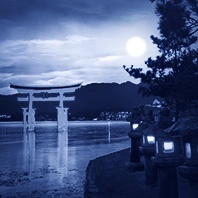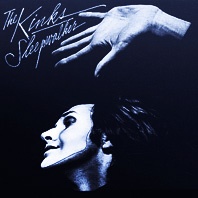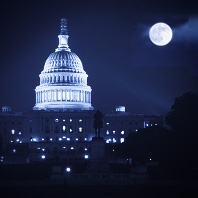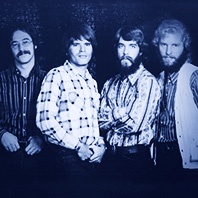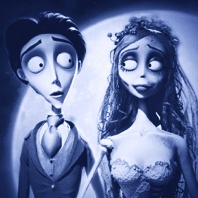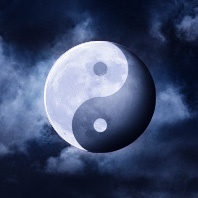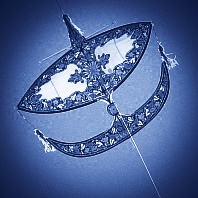Sir Charles Spencer Chaplin (1889–1977) is considered one of the first movie stars ever and made film history with his acting and his works. He is also one of the few artists who managed the transition from silent films to sound films.
Because of using archetypal imagery and symbols in his films, it is natural that the moon could also play a part somewhere. We found four references:
Read more
The comedy horror film »The Fearless Vampire Killers«, directed by Roman Polański in 1967, is a classic of the genre. The film tells the story of the vampire scientist Professor Abronsius and his assistant Alfred (played by Roman Polański), who go on a vampire hunt in the snowy mountains of Transylvania and encounter various bizarre figures, and of course the beautiful daughter of the inn keeper Sarah (played by Sharon Tate, whom Polański married in 1968). The film entrances with its absurd and simultaneously funny atmosphere, created by the skillful interactions between light, music, scenery and actors. Thereby, satirical elements resonate as well, when the rotten aristocracy is represented in the form of the undead.
Read more
Japan has a custom, which is called “Tsukimi” or also “Otsukimi” that literally means “moon-viewing” (tsuki = jap. Moon). This tradition dates back to the Heian period (794–1192) where Japanese culture and the arts were refined to a high degree. At that time, elements of the Chinese “Mid-Autumn Moon Festival” were introduced in Japan, and festivals and rituals were held in the eighth sun month (which corresponds to September in our current calendar).
Read more
Even though the title of this article may suggest it, the following is not about James Bond, the famous secret agent of Her Majesty, but about another legend, which supposedly happened in Wiltshire in southern England.
A gang of alcohol smugglers tried to hide barrels in a pond of a village from the eyes of the official custom officers. When they were caught by them one night at the shore and were asked to explain themselves, the smugglers tried to rake the surface of the water in order to make the view onto the barrels more difficult. They then claimed that they were trying to fish a round cheese out of the pond and pointed at the reflection of the full moon in the water. The officers thought them to be insane and simply granted them to continue as pleased.
Read more
In 1977 the English music group The Kinks, released their album »Sleepwalker«, with which they returned to the more rocky sounds of the 60s after a more conceptual and overtexted phase, and thus were at least able to resume their previous success.
The Kinks are considered to be one of the most important British rock bands of this time, next to The Beatles, Rolling Stones and The Who.
Read more
In the past, we have already reported about the antiquated word »lunatic«, which derives from the Latin »lunatus« and originally means »influenced by the Moon«. This term »lunatic« has been used in the English language, over several centuries for many forms of mental illnesses.
Read more
It is 1969 – John Fogerty, the front man and lead guitarist of the rock band Creedence Clearwater Revival (CCR) writes the song »Bad Moon Rising«. He was inspired by a black-and-white movie called »The Devil and Daniel Webster«, in which almost an entire city is obliterated by a hurricane. Fogerty creates gloomy lyrics that warn about the threat of destruction and its bringer of ill luck, being the rising Moon.
Read more
This article is about the stop motion movie “Corpse Bride” (2005) by Tim Burton, the master of bizarre and subtle productions. The movie is based on a Russian legend “Corpse Bride” and captures the story of a wedding between two people of varying social backgrounds (Victor & Victoria) or rather differing worlds (Victor & Emily), with the resulting tension.
Read more
In view of the two original principles »feminine« and »masculine«, it is tempting to attribute the feminine, receiving principle to the moon and the masculine, creative principle to the sun. And most languages, where nouns posess articles, do reflect this, like for example the Romance languages (French, Spanish, Portuguese, Italian). However, there are a number of languages, for example German, Norwegian, Polish, Slovenian, Serbian or Czech, where the moon is masculine.
So, does the moon contain more masculine quality, after all, than originally assumed?
Read more
The tarot is a pack of playing cards that is used for mystical interpretations. It has a long tradition, possibly dating back to the ancient Egyptian time. Playing cards started to circulate in Europe at around the 14th and 15th century, among them also the so called “tarock” (in Italian “tarocchi”), which is considered to be the predecessor of what is now known as tarot, and still today established independently as a game of cards.
Over time, the symbolism and interpretation begins to move to the forefront and the cards become a popular tool for mystics and fortune tellers.
Read more
As already mentioned before, the Moon assumes a special status in Asia as well. There are a few important festivals, which are closely connected to the Moon, like for example the Moon Festival and the Lantern Festival in China, or many celebrations in Buddhism and Hinduism.
In Malaysia, in South East Asia, there is a traditional kite called »wau bulan«, whereas »wau« stands for kite and »bulan« for the Moon. The kite got its name because of its moon crescent-shaped lower part. When you fly this kite, it supposed to remind of the rising Moon.
Read more


